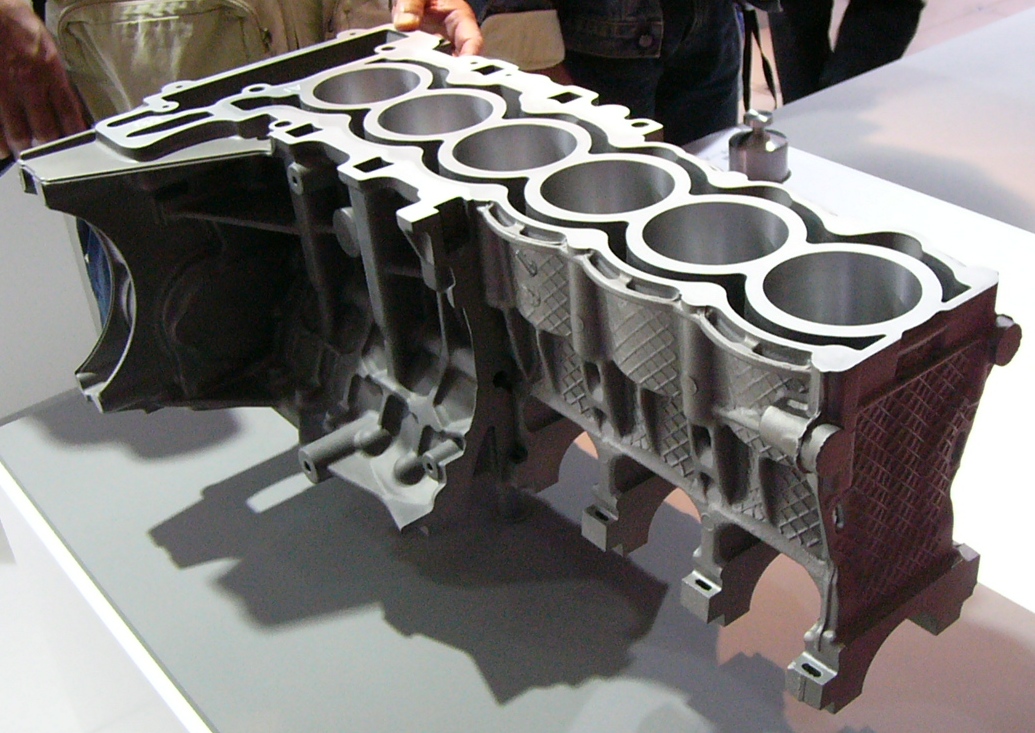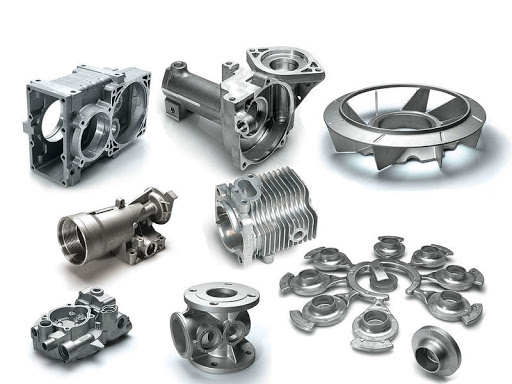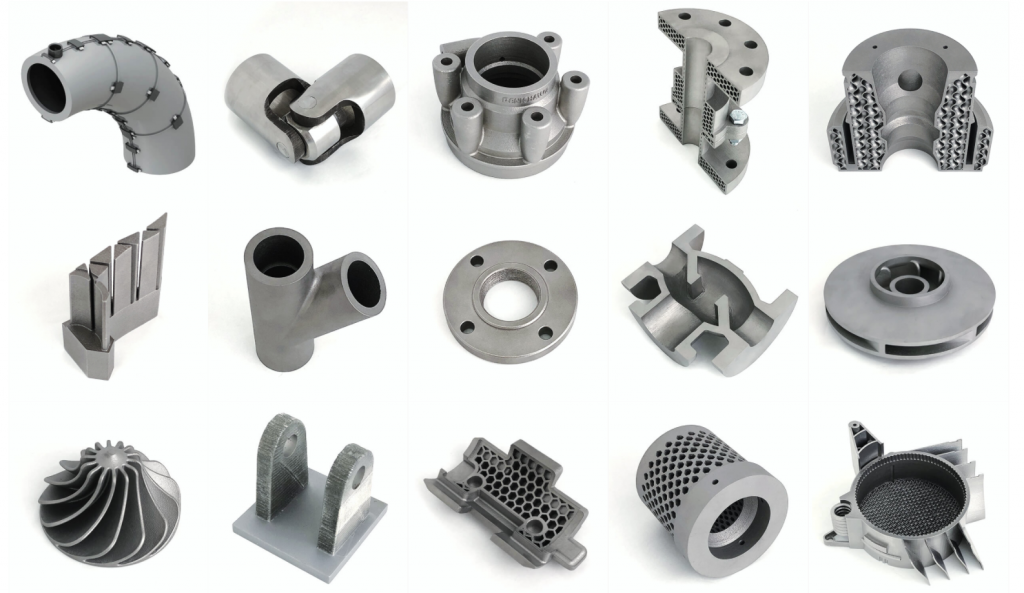Exploring the Versatile Utilizes and Applications of Aluminum Castings in Modern Industries
Aluminum spreadings have actually come to be integral to various modern-day markets because of their special homes. They supply significant benefits in weight reduction, thermal conductivity, and rust resistance. From automotive technologies to applications in durable goods and construction, their adaptability is amazing. Yet, the true degree of their effect extends beyond prompt advantages, hinting at wider ramifications for sustainability and efficiency. What lies in advance for light weight aluminum spreadings in an ever-evolving industrial landscape?
Automotive Market Innovations
The vehicle sector has increasingly welcomed light weight aluminum castings to boost automobile performance and performance. By making use of light weight aluminum, suppliers can create lighter elements, which add to boosted gas economic situation and reduced emissions. Trick applications include engine blocks, transmission cases, and structural components, where the product's strength-to-weight ratio supplies sturdiness without including excess weight.
Aluminum castings also use remarkable thermal conductivity, which assists in far better warmth dissipation, consequently enhancing engine efficiency. Innovations in casting innovations, such as die casting and sand casting, allow the manufacturing of complex geometries, allowing for ingenious designs that optimize room and functionality.
The recyclability of aluminum straightens with sustainability goals in the automobile field, advertising ecologically pleasant methods. As the sector proceeds to introduce, making use of aluminum castings is likely to broaden, driving more developments in lorry design and efficiency.
Aerospace Applications and Developments
While the aerospace market proceeds to focus on weight decrease and fuel effectiveness, aluminum spreadings have emerged as a crucial product choice for different applications. Their lightweight nature, combined with high strength-to-weight ratios, enables considerable renovations in aircraft efficiency and performance. Aluminum spreadings are generally made use of in architectural elements, such as body structures and wing components, where reducing weight is essential.
Current developments in aluminum casting technologies, including boosted alloy solutions and precision casting techniques, have even more boosted the product's efficiency capabilities. These advancements enable the production of complex geometries and detailed designs while preserving architectural integrity. Additionally, light weight aluminum's exceptional deterioration resistance guarantees durability and integrity in harsh aerospace settings.
As the aerospace sector significantly embraces sustainability, aluminum castings offer a recyclable remedy that straightens with environment-friendly methods, making them a crucial component in the growth of next-generation aircraft.
Durable Goods and Everyday Products
As customers progressively seek light-weight yet resilient materials for everyday products, light weight aluminum castings have actually obtained popularity in various durable goods. The special residential or commercial properties of aluminum, including its resistance to corrosion and superb thermal conductivity, make it a perfect choice for products like pots and pans, family devices, and outdoor equipment. Aluminum cast frying pans and pots give even warm circulation, improving cooking performance. Additionally, making use of aluminum in products such as bicycle frames and luggage ensures a balance between stamina and mobility. Manufacturers appreciate aluminum castings for their versatility, as they can be easily molded into complicated forms while preserving structural stability. Additionally, the capability to recycle aluminum without deteriorating its buildings straightens with expanding customer preferences for sustainable products. Generally, light weight aluminum spreadings are essential to the production of durable, useful, and cosmetically pleasing customer products, meeting the demands of contemporary way of lives.
Building And Construction and Architectural Utilizes
Aluminum castings have actually come to be an important element in construction and building design, particularly due to their strength and light-weight nature. These residential or commercial properties make aluminum an optimal choice for various applications, consisting of structural elements, exteriors, and ornamental features - Wisconsin Aluminum Foundry. Building contractors and designers significantly utilize aluminum castings for window frames, doors, and roof covering systems, boosting both performance and aesthetic appeals. The product's resistance to rust further prolongs its life-span, decreasing maintenance prices and making sure durability in diverse ecological conditions
Light weight aluminum can be conveniently formed right into elaborate layouts, allowing for ingenious architectural expressions. Its versatility facilitates the development of personalized items that meet particular style demands, from luxuriant barriers to complex supports. As sustainability ends up being a concern, light weight aluminum's recyclability includes in its allure in environmentally friendly building methods. Overall, aluminum castings are transforming the building market by supplying light-weight, resilient, and aesthetically attractive options.
Digital and electrical Parts
Light weight aluminum spreadings play an essential role in the production of light-weight electric units, which boost mobility and performance in different applications. In addition, their superb thermal conductivity makes them optimal for warmth sinks, guaranteeing peak efficiency and durability of digital parts. Light weight aluminum's conductive properties add to its usage in numerous electric conductors, stressing its value in modern innovation.
Light-weight Electrical Enclosures
Light-weight electric rooms play a vital role in protecting delicate electronic parts from environmental factors and physical damage. Created from aluminum spreadings, these rooms are valued for their strength-to-weight ratio, making them suitable for different applications across sectors. Their light-weight nature aids in minimizing overall system weight, which is essential in portable and mobile electronics. Aluminum's rust resistance improves sturdiness, extending the life expectancy of the enclosed elements. The ability to mold and mildew light weight aluminum into complicated shapes permits personalized layouts, accommodating specific demands while ensuring effective warm dissipation. In addition, these enclosures can be conveniently integrated right into existing systems, providing flexibility and adaptability in modern-day technological atmospheres. Generally, lightweight light weight aluminum enclosures significantly add to the performance of electronic devices.
Heat Sinks and Conductors
While numerous products are made use of in electronic components, aluminum castings stick out for their efficiency in warmth management as heat sinks and conductors. Their outstanding thermal conductivity enables for efficient warm dissipation, which is crucial in protecting against the getting too hot of electronic gadgets. Aluminum's light-weight nature better boosts its suitability for applications where weight is a considerable variable, such as in aerospace and automobile industries. Additionally, light weight aluminum spreadings can be quickly built into complicated forms, supplying style adaptability for enhancing thermal performance. The rust resistance of light weight aluminum likewise adds to the long life and integrity of these parts in numerous atmospheres. As innovation advancements and devices become more compact, the need for efficient warm management remedies, like light weight aluminum castings, remains to expand.
Marine Market Usage
The marine sector progressively relies upon light weight aluminum spreadings for their phenomenal resilience and deterioration resistance. These homes make light weight aluminum an optimal choice for various applications, including watercraft hulls, engine components, and aquatic hardware. The light-weight nature of light weight aluminum castings makes it possible for enhanced gas performance and much easier maneuverability in boat, which is important for both commercial and leisure vessels.

Aluminum spreadings likewise offer substantial cost advantages because of their long life-span and low upkeep requirements, reducing the total functional expenses for aquatic operators. In addition, the adaptability of aluminum permits intricate layouts that can meet details performance needs.
Makers in the aquatic market utilize sophisticated casting strategies to create intricate shapes, making certain that components fulfill rigorous security and performance standards. As the demand for high-performance aquatic vessels grows, aluminum spreadings are positioned as a crucial product in enhancing the capability and long life of marine devices.
Sustainability and Recycling in Aluminum Casting

Aluminum Recycling Refine
Reusing aluminum plays a crucial function in decreasing environmental effect and preserving resources within the spreading sector. The aluminum reusing procedure begins with the collection of scrap aluminum, which can consist of old parts, manufacturing waste, and post-consumer products. This scrap is then arranged, cleansed, and shredded into small pieces to assist in melting.
As soon as prepared, the aluminum scrap is melted in a heating system at reduced temperatures than primary light weight aluminum production, significantly lowering power consumption. The liquified aluminum is after that cast right into ingots or other forms for reuse in various applications - Aluminum Castings. This closed-loop system enables the reliable recovery of aluminum, preserving its residential properties while reducing the need for virgin materials. The reusing procedure is a critical part of lasting techniques in light weight aluminum spreading.
Ecological Advantages
While aluminum casting plays an important function in different industries, its environmental benefits are specifically impressive relating to sustainability and source conservation. The lightweight nature of aluminum adds to power effectiveness websites in transportation, decreasing fuel intake and exhausts. Furthermore, aluminum spreading promotes the use of recycled products, significantly lowering the power needed for production contrasted to key light weight aluminum. This reusing process decreases waste and minimizes the environmental impact linked with mining and refining basic materials. Aluminum is 100% recyclable without degradation of its properties, advertising a sustainable lifecycle. By picking aluminum spreading, markets can significantly lower their carbon footprint while advertising resource performance, making it a necessary choice in the search of eco-friendly manufacturing techniques.
Closed-Loop Systems

Frequently Asked Concerns
What Are the Trick Benefits of Aluminum Castings Over Other Products?
Aluminum spreadings supply lightweight homes, superb corrosion resistance, and high strength-to-weight ratios. They can be quickly formed right into intricate forms, provide great thermal and electrical conductivity, and are economical, making them better over many alternative materials.
How Is the Aluminum Casting Process Eco-friendly?
The light weight aluminum spreading procedure is eco pleasant as a result of its recyclability, reduced power intake, and lowered waste manufacturing. Its capacity to make use of recycled products decreases the carbon impact, advertising sustainability within manufacturing techniques.
What Are Typical Difficulties in Light Weight Aluminum Spreading Production?
Common challenges in aluminum spreading production include maintaining dimensional precision, handling thermal contraction, preventing issues like porosity and incorporations, making certain appropriate mold design, and enhancing manufacturing effectiveness while lessening material waste and environmental influence.
Just How Do Light Weight Aluminum Castings Contrast in Expense With Other Production Techniques?
Light weight aluminum castings usually provide affordable expenses compared to other making techniques, especially for tool to high-volume manufacturing. Their lower first tooling costs and efficient product use can result in beneficial economics with time.
What Future Patterns Are Anticipated in Light Weight Aluminum Casting Innovation?
Future trends in light weight aluminum casting modern technology are expected to consist of innovations in automation, enhanced alloy structures, boosted recycling techniques, and the assimilation of 3D printing, all targeted at raising efficiency, decreasing expenses, and decreasing environmental effect.
Current advancements in aluminum spreading modern technologies, including improved alloy formulas and accuracy casting strategies, have additionally enhanced the material's efficiency capabilities. Aluminum spreadings have actually become a right here necessary part in construction and architectural layout, particularly due to their stamina and light-weight nature. The light weight aluminum recycling procedure begins with the collection of scrap light weight aluminum, which can consist of old parts, manufacturing waste, and post-consumer products. When prepared, the light weight aluminum scrap is thawed in a furnace at lower temperatures than main light weight aluminum manufacturing, substantially lowering power consumption. Additionally, aluminum casting assists in the usage of recycled products, greatly lowering the energy required for manufacturing contrasted to key light weight aluminum.